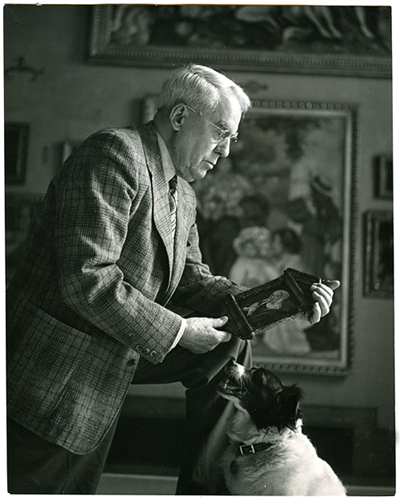|
Reviews of Recent Independent, Foreign, & Documentary Films in Theaters and DVD/Home Video
THE ART OF THE STEAL
Of course, moving Barnes’ paintings from suburban Lower Merion, a few miles to downtown Philadelphia near the Philadelphia Museum of Art and the Rodin Museum would not only allow these works of art to be seen by more visitors, but would also—not coincidentally—pump a lot more tourism money into the city’s coffers. A group (one detractor calls it a “cabal”) with powerful conflicts of interest and hidden agendas got a local judge to approve the move, which was something that was explicitly forbidden in Barnes’s will. Argott’s impressive cultural detective yarn has heroes and villains galore, and although both sides have their own agendas, the conflict is easily distilled to art versus commerce. As we know, commerce wins out every time because art has become such a huge moneymaker—millions of dollars are regularly bid on paintings at Sotheby’s and Christie’s auctions. Big business always attracts a certain breed of people, notably the politicians and the wealthy publishers, trustees, and businessmen who—as insinuated in The Art of the Steal—grease their palms. What could have been merely a dryly academic exercise about art experts and politicians fighting over a multi-billion dollar collection becomes, in Argott’s sensitive hands, a riveting and intelligent exploration of the complex clashes between art and commerce. Barnes expressly stipulated that his foundation was primarily an educational institution, and that the hundreds of Cézannes, Renoirs, Picassos, and Matisses hanging on its walls were for learning purposes, not for merely showing off the art. It’s telling then that those who stand to gain the most from the move to a prime location on Philadelphia’s Benjamin Franklin Parkway never discuss the educational aspects of these works. Rather, it’s all about tourists and their dollars. The lonely fighters for the Barnes collection—a group of former foundation students and professors, art experts, critics, and, later, neighbors in Lower Merion—wage a David vs. Goliath battle that appears doomed from the start. But they won’t give up: one calls the new museum space “McBarnes,” and another former student and teacher, Nick Tinari, is refreshingly candid and direct in his liberal use of epithets to describe the “philistines.” Stealing art has a precedent in this city, as Argott points out. An earlier collector, John G. Johnson, also stipulated that his collection remain in his home, but Philadelphia officials condemned the building as a fire hazard, allowing them to put his paintings into the Philadelphia Museum of Art. (There’s a shot of the empty lot that was once Johnson’s home.) Barnes’s wishes, too, have been all but ignored, with the collection first going on tour in the mid-’90s when the foundation’s home was renovated, followed by this move to Philadelphia, now scheduled for 2012. One of the film’s biggest villains is Walter Annenberg, longtime publisher of the Philadelphia Inquirer and eternal foe of Barnes who finally was able to help pry the paintings from his dead adversary’s hands. Upon his own death, Annenberg’s impressive art collection was hung at the Metropolitan Museum of Art in New York, with the unsurprising provision that it never be moved or sold. In the
cutthroat art world, hypocrisy is alive and well.
Kevin Filipski
|


